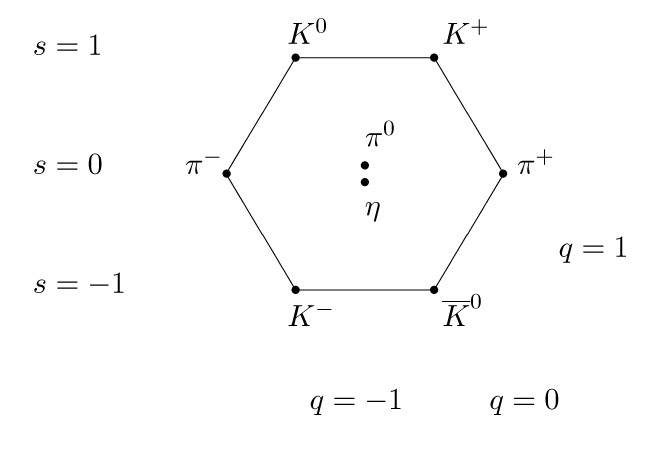Lie Theory Through Examples 4
Posted by John Baez
This week in our seminar we’ll do some examples illustrating how a representation of a simply-connected complex simple Lie group gives rise to a function where is the ‘weight lattice’ of . Wonderfully, this function completely determines the representation (up to equivalence).
In physics, the most famous example is the meson octet, corresponding to the obvious representation of on . It looks like this…

Here we see 8 mesons classified according to their charge and strangeness — which are eigenvalues of two elements of generating a maximal torus in .
It takes a bit of practice to turn this chart into a function from the hexagonal lattice to the natural numbers! Each particle counts for one. So, the 6 corners of the hexagon have , while the point in the middle, drawn as two points in this chart, has , since there are two mesons here with vanishing charge and strangeness: the neutral pion and the eta . The total dimension of this representation is thus — the dimension of .
Here are the lecture notes:
- Lecture 4 (Oct. 28) - Classifying representations using weights. The example of A1, which corresponds to the group SU(2). The relation between SU(2) and SO(3), and their representations. The example of A2, which corresponds to the group SU(3).
By the way, I rewrote last week’s notes.

Re: Lie Theory Through Examples 4
Nice lecture, but there’s a typo in the U(1) matrix on page 1.